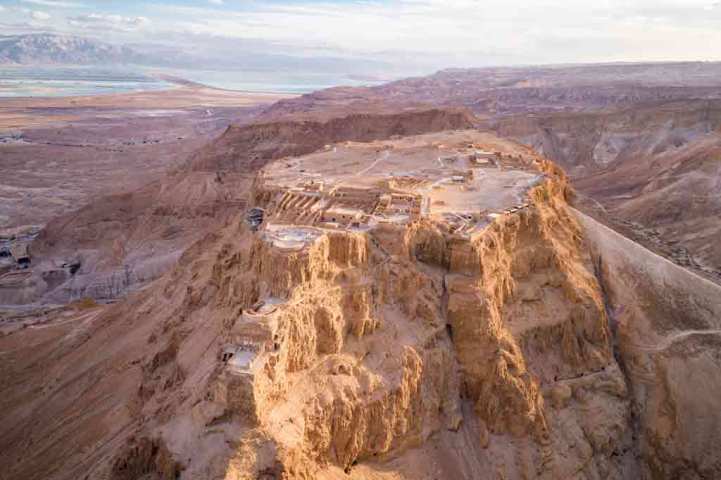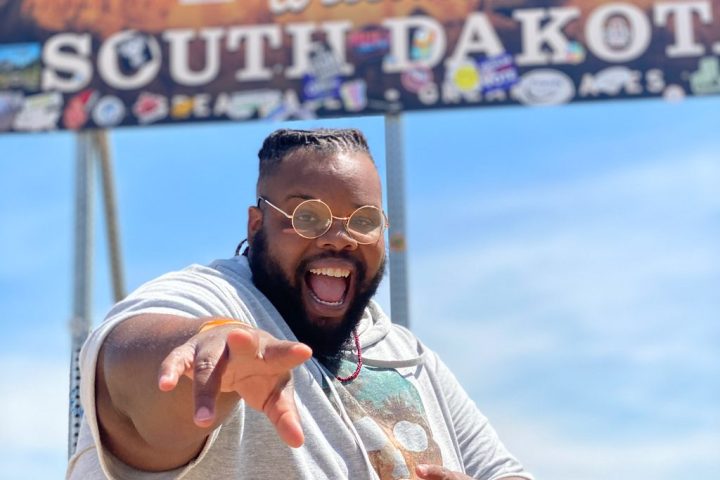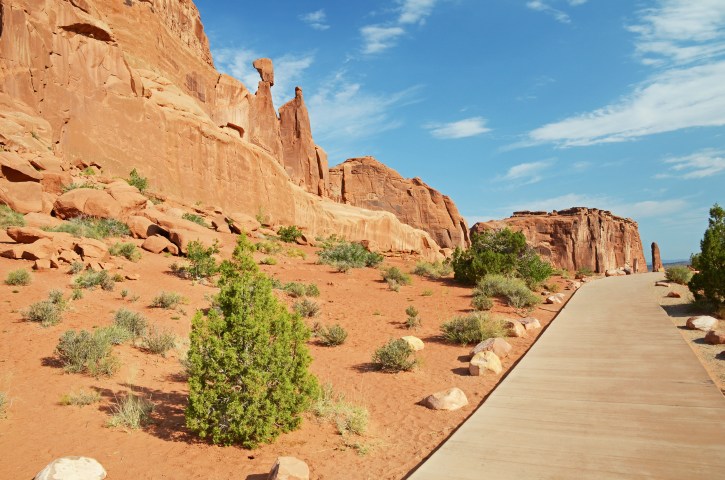Visiting the U.S. National Parks as a Traveler from Abroad
Pradeep Chandra and Patrick Rodden continually crossed paths on Instagram, running into each another on the same comment threads under posts for national parks. With the same ideologies—sharing a common interest in conservation, the preservation of land, and history that is interpreted with integrity—they became fast friends. Since then, they have spent time together in Yosemite, Death Valley, Haleakalā, and Hawaii Volcanoes National Parks. They have also toured several national monuments and national historic sites together.
This interview focuses on the idea of the National Park Service and preservation of public lands as seen from the eyes of a traveler in the United States on a working visa.
Driving under moonlit skies on a cool summer evening on the Road to Hana after a long day of hiking in the Kīpahulu District of Haleakalā National Park, Pradeep and Patrick discussed the importance of the National Park Service. Pradeep took the wheel and spoke about his experiences on public lands in the United States. Below is the conversation the two had, convertible top down in the fresh summer air.
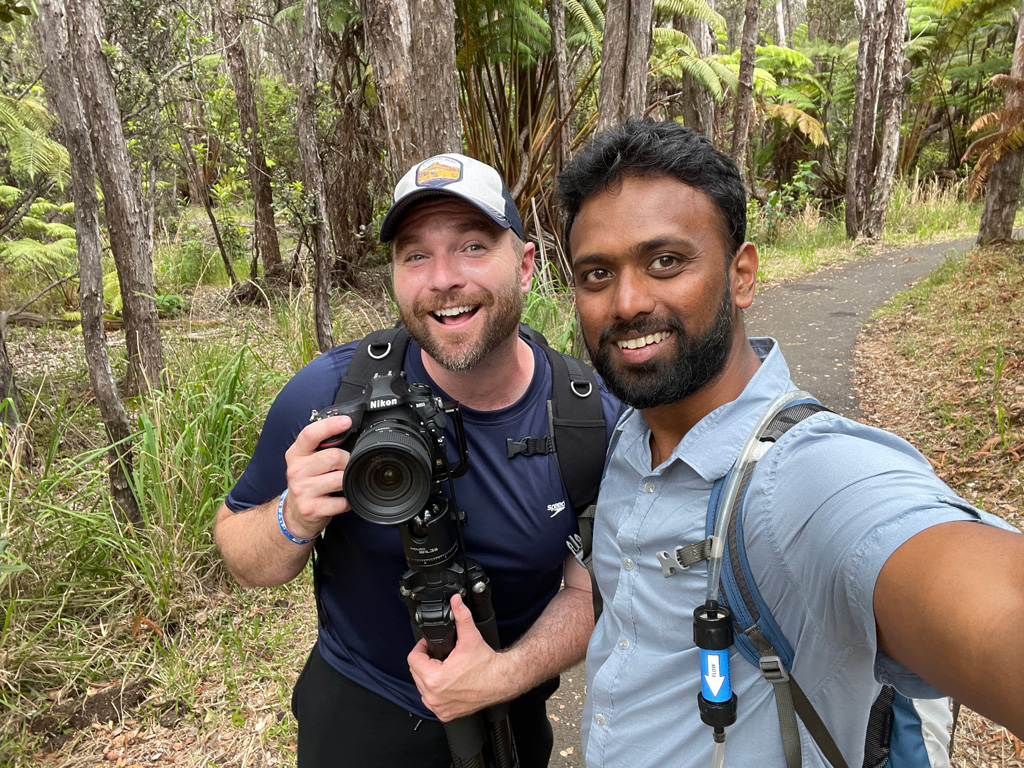
Patrick: What was your first experience in the national parks?
Pradeep: A few years ago I found myself in the very busy tourist town of Gatlinburg, Tennessee. If you’ve been to Gatlinburg, you know it is surrounded on all sides by dense forest. At the east end of town, I drove into Great Smoky Mountains National Park. At the time, I did not know anything of the National Park Service or what constituted a national park. It was beautiful being in the mountains surrounded by a dense canopy of deciduous trees amidst rivers and waterfalls, but I did not know the magnitude or importance of the physical space. At the time, I thought I was in another forest, much like many others I had been in since coming to the United States. It was not until later that I learned that Great Smoky Mountains was a national park, and not only that, it is the busiest and most popular park in the country.
Another experience I had in a space without knowing it was a national park was at the foot of Mount Rainier. I visited Mount Rainier National Park, but I did not know that the volcano was preserved under the Park Service. At that time I was still not aware of what constituted a national park; however, I did understand that Mount Rainier was a special place with its massive glacially capped peak and meadows of wildflowers.
Patrick: What was the first park you knew you were in? What was that first experience when you walked into a place and knew it was a National Park?
Pradeep: The first park I was in that I knew was a national park was Acadia. I knew to look at maps, stop by the visitor center, and talk to rangers. I was aware of how to approach the land and how to prepare for the experience.
Patrick: Was Acadia the experience you had in a park that set your love for national parks in motion?
Pradeep: No. The first experience I had that built my love for the Park Service was backcountry hiking and camping in Yosemite National Park. I hiked from the Visitor Center in the Valley to Merced Lake to Tuolumne Meadows. If you have been on this hike you know that one of the first legs of the hike is taking the Mist Trail just past Camp Curry. Hikers have the opportunity to start with one of the most iconic views in this park: the rainbow spray of the roaring Vernal Fall. Shortly after, hikers must traverse steep rock-cut stairs on the side of Nevada Fall. It’s quite an eye-opening experience. It really sets into motion the understanding of why this space was preserved for the enjoyment of future generations.
When I finally made it to Tuolumne Meadows, I had a movie moment, or something that would speak to the quintessential national park experience. Each layer of the evening was painted one-by-one. There were bright colorful (red, yellow, and violet to be precise) wildflowers blanketing the meadow, bees flitting around the flowers, deer peacefully grazing by the river, birds chirping in the trees, the smell of lodgepole pine wafting in the air, and a sunset to rival any other that I had seen. It was unreal to see all of this come together at the same time. It looked as though an amateur painter were trying to cram every idyllic scene into one painting. Everything aligned to create a wholly picturesque Yosemite experience.
Patrick: I remember you sharing Zion stories with me. What experiences in Zion have you had that are comparable to your time in Yosemite?
Pradeep: I have had a huge sense of adventure in Zion. There is nothing like this park because of the opportunities available for hiking. I will never forget my time on Angel’s Landing. I was scared at first, but it turned out to be my favorite hike. The sheer drops, Walter’s Wiggles, and using the chains section are enough to drive your adrenaline, but they bring a grand appreciation to the experiences that can be had in national parks. To me, Angel’s Landing is the jewel in the crown of hiking experiences in the National Park Service.
During my second visit to Zion, and one of the few times I have been with a group in a park, I had a harrowing experience in a different way in the Narrows. The Narrows is a great hike for the fact that you’re surrounded by towering canyon walls while moving through sometimes waist-deep water. My friends and I were hiking top-down in the Narrows, headed toward the Temple of Sinawava (for those of you less familiar with the Narrows, the most popular way to hike it is bottom-up from the Temple of Sinawava). One member of my hiking group ended up hurting their leg. I was the one chosen to go get help.
Unfortunately, the closest help was at the Visitor Center by Springdale in the park. Top-down hikes of the Narrows begin 14-15 miles from the trailhead at the Temple of Sinawa. I spent eight hours running down the Narrows to get help. It felt like running in a Super Mario game because the entire run looked like a repetitive background of canyon walls. There were times I had to jump into water that was deeper than I am tall and I hadn’t swum in 15 years prior to this experience. I had to tie all of my things together and hope that they would float. At one point, my belongings detached and separated from me in a deep pool of water. At the opposite end of the pool, the water had formed a whirlpool current that sent all of my gear back to me. It was quite the experience. Not to mention, part of the hike was done in the dark.
I finally made it to rangers to report that one of our group was in need of assistance. This experience will stick with me for the rest of my life. I ultimately learned to never do anything that would endanger me or anyone that would come to my rescue.
Patrick: As someone from another country, how do you view the National Park Service?
Pradeep: I think the United States has done very well with its conceptualization of national parks. The country has perfected the model for a system that protects the land. I think that citizens of the United States should not be complacent with the Park Service. Having a work visa gives me a sense of urgency to visit as many parks as possible since I do not know when my visa could expire. The United States National Parks contain the largest trees, the tallest trees, the oldest trees, the longest caves, the largest gypsum dune field, the largest collection of hydrothermal springs, largest collection of petrified wood, most active volcanoes, and some of the largest glaciers in the world. The Park Service protects the superlatives. The United States is blessed with natural resources.
When it comes to engineering, there are so many marvelous achievements that can be seen in the parks, such as the Going-to-the-Sun Road in Glacier National Park and the Zion-Mount Carmel Tunnel in Zion National Park. Not only do the large-scale projects like infrastructure make the parks astounding, but the trail systems devised by the CCC add an unparalleled dimension to the National Parks experience. When you look at trails like Angels Landing or the trail to Mount Whitney, it’s unbelievable to think of how they were created by hand.
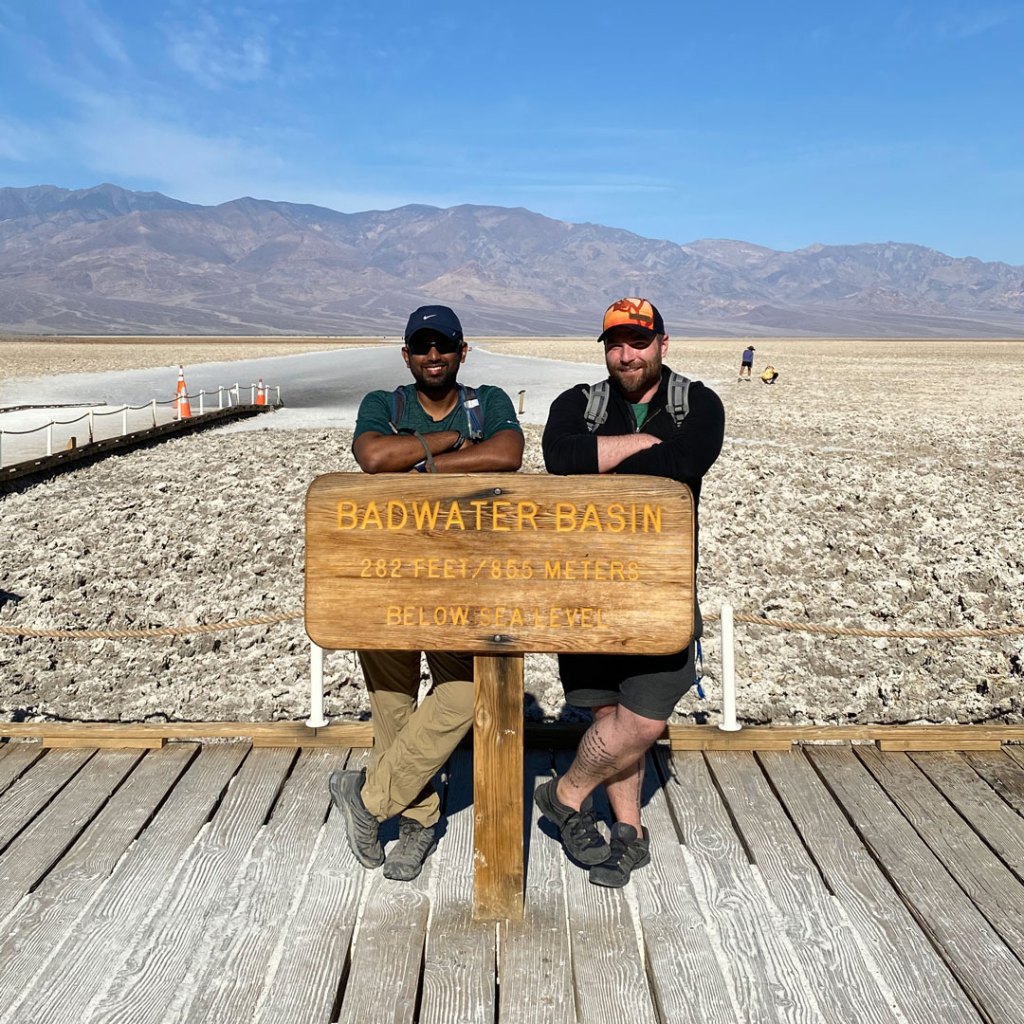
Patrick: As a person with a visa, what would you tell someone from the United States about visiting the national parks?
Pradeep: I think people should be highly political when it comes to being invested in the parks. All it takes is an Executive Order to wipe public land off the map. United States Citizens should be permanently vigilant about protecting the national parks, or any public land for that matter. If you even look back in fairly recent history, Redwood National and State Parks were saved from logging; the Grand Canyon was protected from mining claims and currently faces damming in offshoot canyons; Mesa Verde was protected from looters (although archaeologists ended up looting more than their fair share). Even now, the parks are accommodating cattle ranchers (Point Reyes, Capitol Reef, the list goes on). Oftentimes, the land the parks protect is the last of its kind in the country or even in the world for that matter. Grassroots activism is so important when it comes to upholding conservation and working on climate change.
Beyond that, on a human rights issue, much of the land, if not all, has connections to the Native American population. There is so much sacred space beneath our feet that many people are not even aware of most of the time. Indirectly, through cattle ranching, mining, and even carving trails through the parks, we are desecrating sacred spaces.
Patrick: Speaking of Native Americans, you mentioned you visited South Dakota earlier this year. How do you view the history of Native Americans and how we treat that history when it pertains to public lands?
Pradeep: I find it interesting how the history is interpreted. I see the desire to tell the story by the Park Service, but I believe it could go deeper. I fight with the idea that there are so many places named by settlers and after settlers that have been destructive to Native American culture, life, and lore. Devils Tower National Monument is one. Devils Tower is deeply insensitive to the Native American community; the formation was referred to as Bear Lodge. Unfortunately, due to a bad translation, we ended up with Devils Tower, evoking such a negative connotation to the area. It also perplexes me that even Custer State Park is named Custer. It is in the heart of the Black Hills, one of the most sacred lands to Native Americans, but holds the name of one of the most notorious murderers of Native Americans. It almost seems like a slap in the face to them.
Bear Butte State Park, a location sacred to seventeen different Native American tribes, especially to Cheyenne who called it Noaha-vose (the Giving Hill), believe that the supreme being who created the universe communicates with them there. It was there in 1857 Crazy Horse swore to fight further encroachment by the white man in the sacred Black Hills. Sadly, less than 10 minutes from the park is the city of Sturgis, host of the world’s largest motorcycle rally. It is named after the General who also fought against Native Americans in the Nez Perce war. The city is slowly encroaching on Bear Butte State Park bringing much noise and commotion with little acknowledgement to the requests of the Lakota Sioux and other Native American groups to keep development to a minimum.
I am also deeply appalled at the handling of Bears Ears National Monument. I cannot believe that 85% of it was stripped away in an Executive Order and it was accepted. This land is deeply rooted in the hearts and heritage of Native Americans. The fact that we let it go without much of a fight and have not really put up a fight to get it restored is disturbing. Capitalism has eaten and trumped something sacred.
Patrick: Animals are important to Native Americans, and wildlife conservation is one of the core principles of the Park Service. What are your thoughts on wildlife management?
Pradeep: There are good aspects and then also aspects that seem hypocritical to the principles. There are programs that release animals into parks, but there are also times when parks allow people to cull herds with a permit. If animals are in a park, no matter the population, they should not be touched. Not only that, if we are protecting species, parks should hold that idealism even within the walls of their restaurants. They should not serve bison burgers or bison jerky considering the history of the bison.
Patrick: What are some final thoughts on visiting the national parks?
Pradeep: The United States has been blessed with this opportunity to have access to public lands. It does seem that as of late it is becoming increasingly difficult to manage the land with the amount of people coming onto it. I think that the Park Service is going in the right direction of requiring reservations for particular hikes or even for entry into parks. Managing people is just as important as managing the land at this point. This ties full circle into when I first started reading about the climate emergency and the urgency of needing to go to parks. We should all see these disappearing wonders such as the glaciers in Glacier National Parks and the vanishing Colorado River in the Grand Canyon, but at what cost? Is it better knowing something is there and not being able to see it knowing it will be protected? It is going to take a lot more budgeting to staff the parks in order to ensure that trails are maintained and that people are not destroying objects of natural beauty and cultural importance. There is much contemplation for the future ahead.
Coming from an obscure town in Southern India, I feel privileged to have been able to partake in the experience of enjoying America’s national parks. All in all I have been to 40 of the 63 national parks. That is 40 parks more than what I thought I would see in my lifetime.
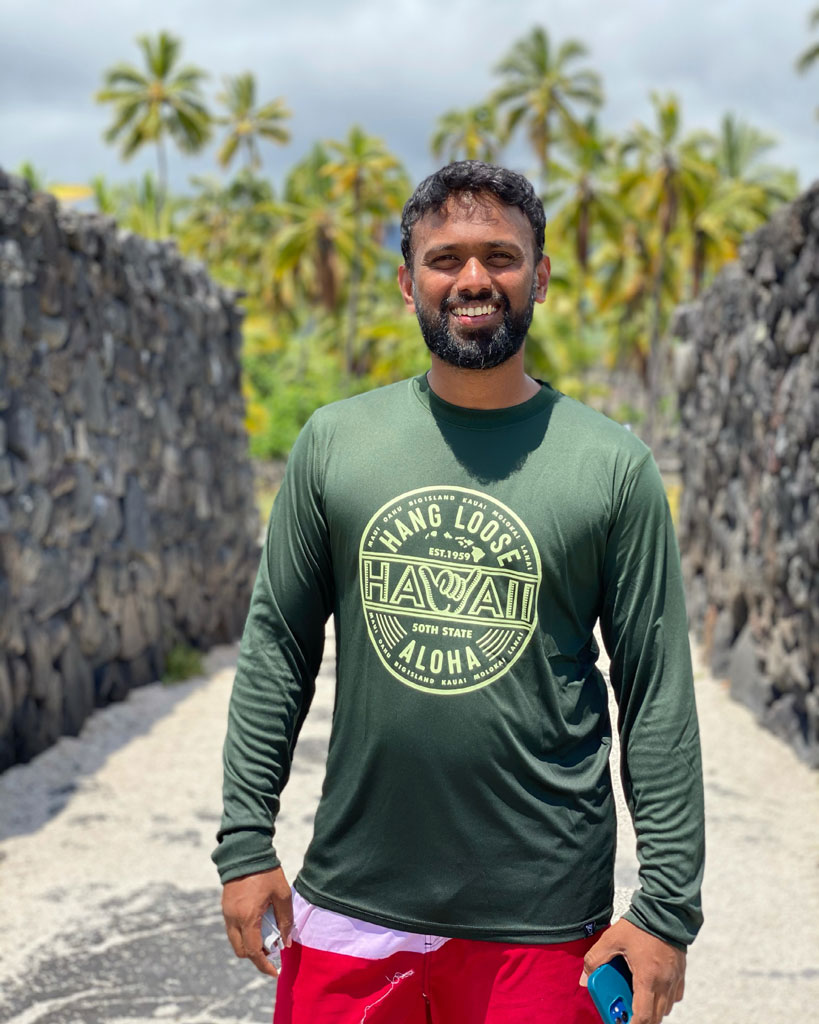
Recommended Reading
Note from Moon: If you are looking to further your understanding of the complicated history between the National Park System and Black, Indigenous, and People of Color, here are some sources to get you started:
Indigenous Perspectives
-
How Indigenous Hikers Are Reclaiming America’s Most Famous Trails
-
How the Land Back movement is reclaiming land stolen from Indigenous people
Experiences of People of Color in the National Parks
-
National parks are travel’s next frontier in the movement for racial equality
-
People of Color and Their Constraints to National Parks Visitation (PDF)
-
People of Color Have Been Systemically Excluded from National Parks
National Parks and John Muir
-
Environmentalists Grapple with the Racist History of John Muir
-
Hey, It’s John Muir’s Birthday, So Here’s a Reminder of His Racist Legacy
About Pradeep Chandra
Pradeep is an information technology consultant in the Dallas-Fort Worth area who champions the environment and everything that encompasses. In Pradeep’s free time, he rock climbs, reads books on science and Indigenous/working class histories, advocates for animal rights, and travels to National Parks. He’s also a big fan of Rick and Morty and Breaking Bad. Since his arrival in the United States in 2010, he has been actively engaged in animal activism giving them a voice. This interview focuses on the point of view of the idea of the National Park Service and preservation of public lands as seen from the eyes of a person in the United States on a working visa. Find him on Instagram @inapcha.
About Patrick Rodden
Patrick is an assistant principal in California. An educator by trade, he takes part in volunteering at Pinnacles National Park in interpretation when needed. Outside of working to educate others, he spends time visiting National Park sites and public land across the United States. So far he has visited 186/423 National Park sites and all of the National Parks in the contiguous United States. He likes to read in his free time and goes on photography expeditions. He lives with his tuxedo cat Berlioz. Find him on Instagram @cliftonwanders.
What to Read Next
By clicking ‘Sign Up,’ I acknowledge that I have read and agree to Hachette Book Group’s Privacy Policy and Terms of Use
